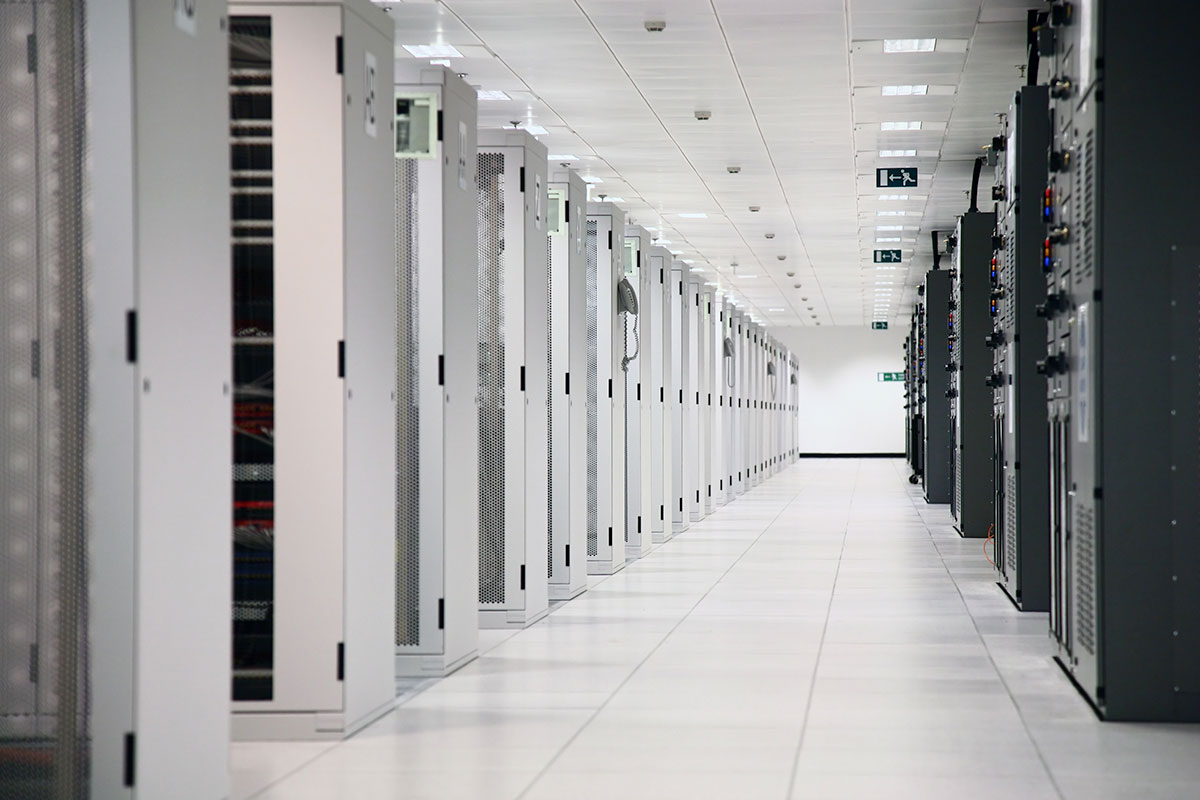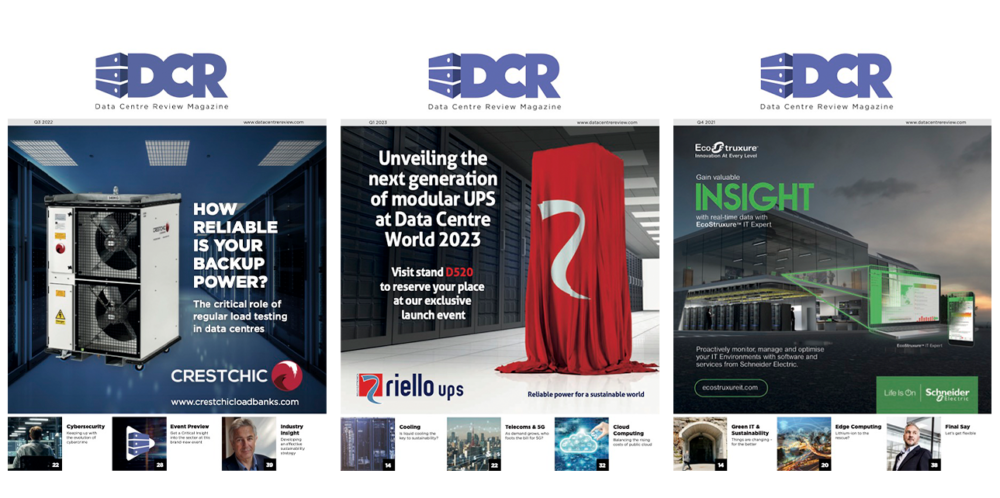Stuart Thompson, President, ABB Electrification Service, argues that only a swift, smart overhaul of aging electrical infrastructure can shield AI‑hungry facilities from crippling downtime and soaring costs.
In an increasingly digital-first world, data centres are now the backbone of modern society. Whether it’s powering AI innovation, driving global commerce, or keeping essential services running, these silent, yet powerful engines underpin the connectivity and compute capacity that modern life depends on.
Yet, as digital demand accelerates, so too does the strain on the infrastructure supporting it.
By the end of this decade, data centres in the US alone are projected to consume nearly 12% of the country’s total electricity, up from just 3.7% in 2024, according to McKinsey. On a global scale, the numbers are even more striking. According to the International Energy Agency (IEA), data centres used approximately 460 TWh of electricity in 2022 – a figure set to more than double to over 1,000 TWh by next year, roughly equivalent to Japan’s total annual electricity consumption.
These numbers signal more than just growth – they expose structural vulnerabilities in how data centres have been designed and maintained.
The challenge is no longer simply how to build more capacity. It’s how to modernise existing infrastructure to ensure resilience, reliability, and sustainability in an increasingly volatile, AI-fuelled landscape. This is why modernising electrical infrastructure is no longer optional – it’s a business-critical imperative that secures one’s licence to operate, mitigates financial risk, and ensures long-term competitiveness.
Growth without strategy?
The data centre boom of recent years has been driven by a race to capitalise on cloud and AI growth. But in the rush to scale, strategic infrastructure planning hasn’t always kept pace. Many new facilities were built for speed, not longevity, resulting in underutilised capacity and critical gaps in operational resilience.
Adding to this is the evolving nature of AI itself. Early infrastructure was designed for large-scale model training, but the emergence of real-time, reasoning-based AI models is changing how data centres must operate. The shift toward low-latency, high-resilience processing is forcing operators to rewire and rethink their electrical systems – not tomorrow, but today.
Why delayed maintenance comes at a steep cost
While the spotlight is often on greenfield expansion, a less visible but equally pressing challenge is hiding in plain sight: ageing, outdated electrical infrastructure. Many data centres continue to rely on systems installed decades ago, designed for a different era and vastly different demands. Our research has shown that waiting for equipment to fail can cost up to 10 times more than implementing proactive maintenance, while exposing operators to unnecessary safety and sustainability risks.
The cost of failure is also rising. A single unplanned outage can result in millions of dollars in lost revenue, penalties, and reputational damage. According to Uptime Intelligence’s 2024 Annual Outage Analysis, average costs of unplanned data centre outage can still run into millions of dollars per incident. More importantly, disruptions erode trust, trigger financial penalties, and can have cascading impacts on digital ecosystems that millions of people rely on.
This is why modernising electrical infrastructure is no longer optional. For data centre operators, the question is no longer if they can afford to invest in electrical modernisation – but whether they can afford not to.
Slashing maintenance time with smart monitoring
The solution lies not only in building new capacity but in making existing infrastructure smarter, safer, and more sustainable. Across the industry, we are seeing a major shift – from reactive to predictive maintenance, which leverages real-time monitoring and advanced analytics to anticipate equipment failures before they occur. This reduces unplanned downtime, optimises operational efficiency, and extends asset lifecycles. To keep pace with demand, data centres must be at the forefront of this transformation. By adopting a predictive asset management strategy, operators can reduce maintenance time and frequency by up to 30% and lower operational expenditure by up to 40% compared to traditional time-based maintenance.
Equally important is the role of digital retrofitting – upgrading existing systems with smart, connected technologies rather than resorting to costly, full-scale replacements. By embedding real-time monitoring and analytics into aging infrastructure, operators can gain instant visibility into equipment health, receive early warnings of potential failures, and take action before downtime occurs. This approach not only extends asset life by up to 20–30 years but also reduces emissions and delivers significant CapEx savings, all while unlocking new efficiencies from infrastructure that’s already in place. In fact, through retrofits, operators can experience 80% less downtime compared to full replacements.
Ultimately, by modernising rather than replacing, data centre operators can move away from the outdated ‘take-make-dispose’ mindset and embrace a more circular, sustainable approach to asset management.
Enabling the renewable energy shift
The rapid expansion of data centres has also highlighted a troubling sustainability paradox: the very infrastructure driving digital innovation is putting unprecedented pressure on global energy consumption and climate goals.
However, this challenge presents a unique opportunity. As renewable energy becomes increasingly affordable, data centre operators have an opportunity to rethink their entire energy strategy. Many leading players – from hyperscalers to colocation providers — are already investing heavily in solar, wind, and other clean energy sources to decarbonise their operations. For example, Meta has signed large-scale solar deals to secure renewable energy at predictable costs, insulating itself from price volatility and strengthening energy security.
Yet renewables come with their own complexity – namely, intermittency risks. Without modern, digitally connected infrastructure and advanced energy management systems, data centres risk compromising uptime and efficiency. That’s why modernising electrical infrastructure — paired with smart energy management systems and advanced digital tools – is crucial to unlocking the full potential of clean energy without sacrificing reliability.
A call for strategic re-evaluation
The data centre sector stands at a critical inflection point, and its entire stakeholder ecosystem must reassess its strategies. The current landscape illustrates that rapid growth without careful planning can and does often lead to wasted resources and failed projects.
Operators can no longer afford to focus solely on building new capacity without optimising what they already have. Strategic re-evaluation of existing assets is crucial to ensure long-term viability. That means investing in predictive maintenance, upgrading aging equipment through digital retrofits, and embedding sustainability and resilience into every infrastructure decision.
The future of digital infrastructure will not be defined by how fast we can grow – it will be defined by how well we manage, maintain, and future-proof the systems we already rely on. Those who act now to strengthen the backbone of their operations will not only avoid unnecessary risk but will secure a decisive advantage in an increasingly competitive digital economy.



